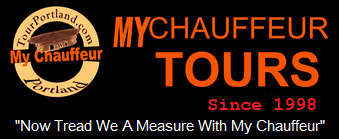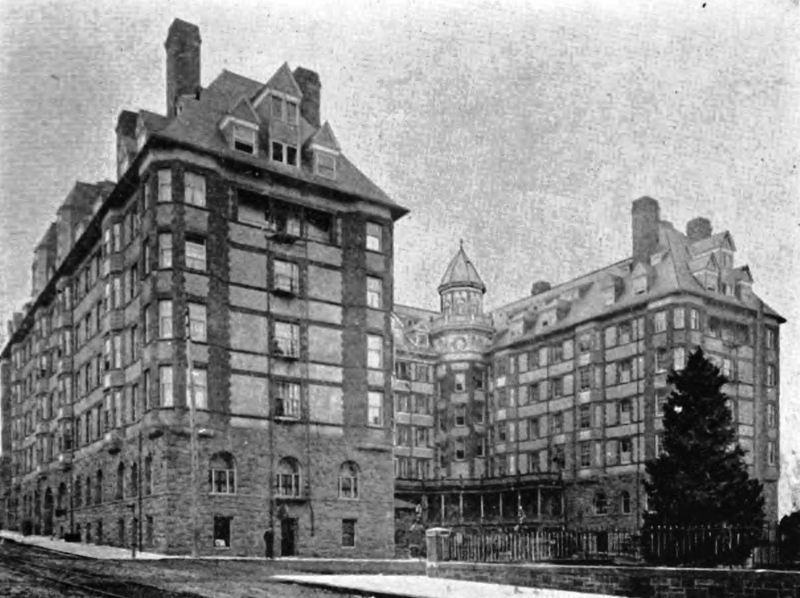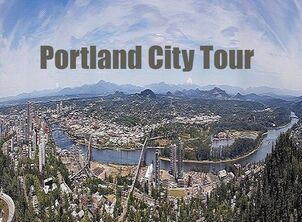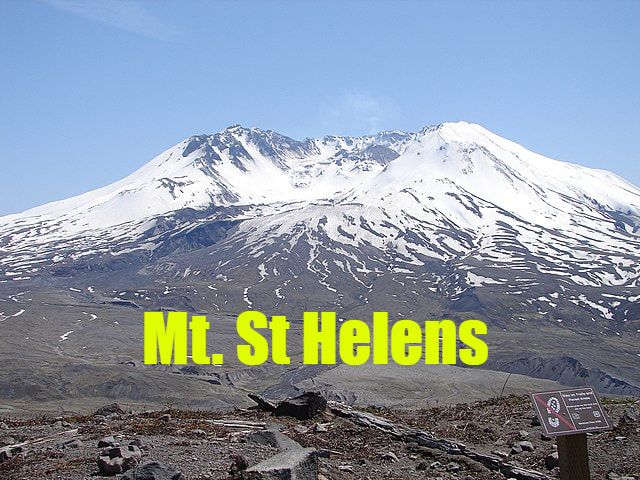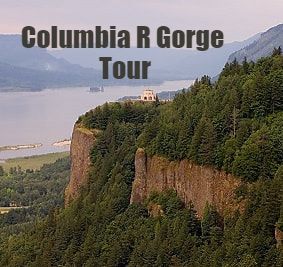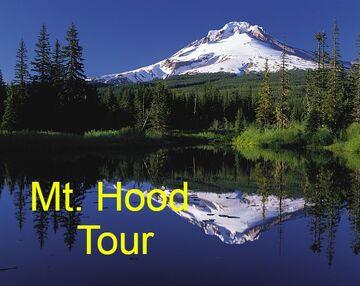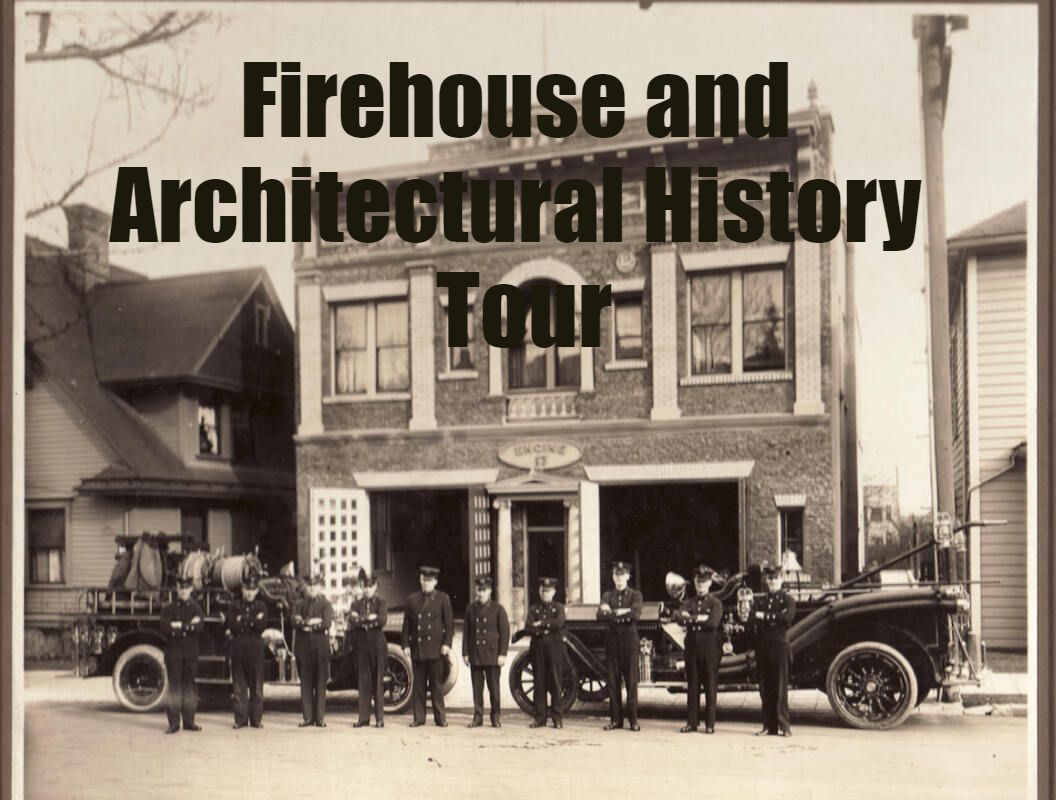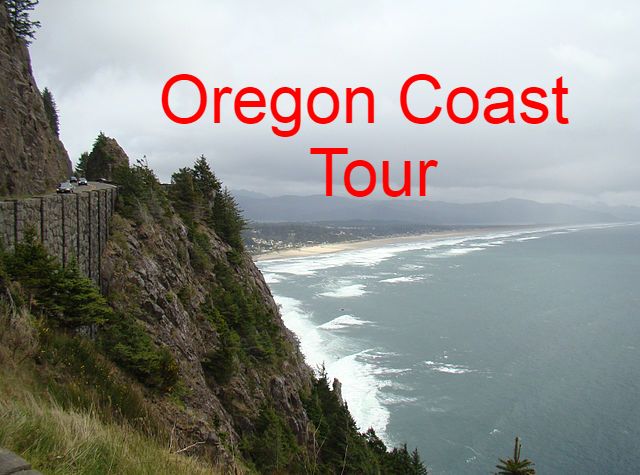Portland City Tour - Walking (#2) - (Reader)
Hike Portland's Old TownAmble through parks and historic streets in Oregon's largest city About the Hike: Wedged between the Willamette River and a wall of steep, forested parks, Portland's downtown is compact enough to explore on a two-hour walking tour.
Allow extra time to stop at museums and shops.
Difficulty: An easy, 2.3-mile round-trip walk, with 100 feet of elevation gain.
Season: Open all year.
Getting There: It's easiest to take MAX, Portland's rapid transit train, downtown to the recommended starting point at Pioneer Courthouse Square (6th Avenue and Yamhill Street). If you're driving on Interstate 5, follow City Center signs and look for one of the many city-owned Smart Park parking structures downtown.
Fees: None.
Hiking Tips: Begin at Pioneer Courthouse Square, a brick plaza with a coffee shop above ground and a travel bookstore below ground. The bookstore offers free maps of downtown.
For the recommended walking loop, head across the square to Yamhill Street and walk downhill alongside the 1869 Pioneer Courthouse. At the next corner, veer left into Pioneer Place, cutting diagonally through this four-story shopping atrium. Then zigzag another two blocks toward the river to the Dekum Building, an ornate office tower built in 1892 solely from materials native to Oregon.
Walk onward another block to Stark Street and you'll pass the gothic 1879 Bishop's House, converted from a Catholic bishop's home to a Chinese tong's headquarters, a speakeasy and finally a restaurant. Turn left at the corner onto Old Town's Second Avenue. Notice the high-water marks of Willamette River floods on the stone building at 133 Second Ave.
Then turn right on Ankeny Street at the New Market Theater, an 1875 building modeled after London's Covent Garden. Cross First Street to the soothing water sounds of the 1883 Skidmore Fountain, donated by a Portland druggist to quench the thirst of "horses, men, and dogs."
The next block fills with the arts and crafts vendors of Saturday Market on weekends from March through December. Cross the Naito Parkway to the lawns of Governor Tom McCall Waterfront Park and turn right on a promenade along the riverbank's concrete seawall. Here you'll pass the salvaged mast of the 1893 USS Oregon.
A few blocks beyond the Morrison Street bridge, head inland to Salmon Street Springs, a gigantic fountain with 185 computer-controlled jets. After a few blocks on Salmon Street, angle across Lownsdale Square, a park block donated in 1852 at a time when an elk was still said to graze here. The current elk statue dates to 1900.
As you continue up Main Street from the elk you'll pass the Portland Building, a post-modern office tower that raised eyebrows in 1983 for its daring angles and its teal-rust-cream color scheme.
A few more blocks up Main Street brings you to the Portland Center for the Performing Arts. Beyond this concert hall, detour briefly left along the Park Blocks to the Oregon History Center (Open 10 am-5 pm Tuesday-Saturday and noon-5pm Sunday; adults $6, students $3). Across the street and down one block is the Portland Art Museum (Open 10 am-5 pm Tuesday-Saturday and noon-5 pm Sunday; adults $10, children $6). Both are worth an extended visit.
Then turn around and walk north through the park blocks. At Taylor Street, detour left to visit the stately Multnomah County Central Library, built in 1913 and renovated in 1997. A block later, turn right at the corner of the Galleria. With a 75-foot atrium, this building opened in 1910 as the first department store west of the Mississippi. Then walk back beside the MAX rail lines to conclude your loop hike at Courthouse Square.
Pioneer Courthouse:
Today Portland's Old Town encompasses roughly the first three blocks west of the Willamette River, from the Burnside Bridge area south to the Morrison Bridge. Several of the 19th-century stone, brick and cast-iron-fronted buildings are lively pubs, but not as many as in the 1870s, when Portland had one saloon for every 40 inhabitants.
In those days, riverfront docks were two-storied, with an upper level used during spring's high water. The lower levels became hangouts for shanghai men, who delivered unwary passersby for forced service on merchant ships to China.
Pioneer Courthouse Square has seen many changes since the city founding in 1843. The dense forest originally on this site was shipped as timber to California during the 1848 Gold Rush. The resulting stumps, painted white to prevent pedestrians from tripping over them in the dark, won Portland the disparaging nickname "Stumptown on the Willamette."
Portland's first real schoolhouse was built here in 1858. But the school came down in 1883 to make way for the Portland Hotel, a seven-story Queen Anne chateau that fell in 1950 to make way for a parking lot.
In the 1970s, 64,000 citizens donated money to create the present public plaza. Their names remain engraved on the square's paving bricks. Sidewalk artwork near the square includes whimsical bronze statues of otters, bears, beavers, a deer and a commuter with an umbrella.
Allow extra time to stop at museums and shops.
Difficulty: An easy, 2.3-mile round-trip walk, with 100 feet of elevation gain.
Season: Open all year.
Getting There: It's easiest to take MAX, Portland's rapid transit train, downtown to the recommended starting point at Pioneer Courthouse Square (6th Avenue and Yamhill Street). If you're driving on Interstate 5, follow City Center signs and look for one of the many city-owned Smart Park parking structures downtown.
Fees: None.
Hiking Tips: Begin at Pioneer Courthouse Square, a brick plaza with a coffee shop above ground and a travel bookstore below ground. The bookstore offers free maps of downtown.
For the recommended walking loop, head across the square to Yamhill Street and walk downhill alongside the 1869 Pioneer Courthouse. At the next corner, veer left into Pioneer Place, cutting diagonally through this four-story shopping atrium. Then zigzag another two blocks toward the river to the Dekum Building, an ornate office tower built in 1892 solely from materials native to Oregon.
Walk onward another block to Stark Street and you'll pass the gothic 1879 Bishop's House, converted from a Catholic bishop's home to a Chinese tong's headquarters, a speakeasy and finally a restaurant. Turn left at the corner onto Old Town's Second Avenue. Notice the high-water marks of Willamette River floods on the stone building at 133 Second Ave.
Then turn right on Ankeny Street at the New Market Theater, an 1875 building modeled after London's Covent Garden. Cross First Street to the soothing water sounds of the 1883 Skidmore Fountain, donated by a Portland druggist to quench the thirst of "horses, men, and dogs."
The next block fills with the arts and crafts vendors of Saturday Market on weekends from March through December. Cross the Naito Parkway to the lawns of Governor Tom McCall Waterfront Park and turn right on a promenade along the riverbank's concrete seawall. Here you'll pass the salvaged mast of the 1893 USS Oregon.
A few blocks beyond the Morrison Street bridge, head inland to Salmon Street Springs, a gigantic fountain with 185 computer-controlled jets. After a few blocks on Salmon Street, angle across Lownsdale Square, a park block donated in 1852 at a time when an elk was still said to graze here. The current elk statue dates to 1900.
As you continue up Main Street from the elk you'll pass the Portland Building, a post-modern office tower that raised eyebrows in 1983 for its daring angles and its teal-rust-cream color scheme.
A few more blocks up Main Street brings you to the Portland Center for the Performing Arts. Beyond this concert hall, detour briefly left along the Park Blocks to the Oregon History Center (Open 10 am-5 pm Tuesday-Saturday and noon-5pm Sunday; adults $6, students $3). Across the street and down one block is the Portland Art Museum (Open 10 am-5 pm Tuesday-Saturday and noon-5 pm Sunday; adults $10, children $6). Both are worth an extended visit.
Then turn around and walk north through the park blocks. At Taylor Street, detour left to visit the stately Multnomah County Central Library, built in 1913 and renovated in 1997. A block later, turn right at the corner of the Galleria. With a 75-foot atrium, this building opened in 1910 as the first department store west of the Mississippi. Then walk back beside the MAX rail lines to conclude your loop hike at Courthouse Square.
Pioneer Courthouse:
- Portland's living room -- All age events include the Annual Christmas Tree lighting, Movie Month in the Summer with couches all around, an all-city pillow fight, and later an all-city slumber party
- This block dates from 1856 when the city purchased it for the site of one of the 1st public schoolhouse in Portland, Central School.
- The school was moved in 1883 to make room for the Portland Hotel, Portland Grandest hotel. The hotel was torn down about 60 years later and hauled away, where about 20 years Eric Ladd, an early environmentalist, built the gateway from scrap from the Portland Hotel.
- After the hotel there was the Meier & Frank parking garage here but in the 1970s Portlanders decided they wanted a free public space here, and raised the $750,000 to rescue the $7 million project by purchasing bricks for $15 each.
- However, the bricks were not laid in any discernible order, so people looking for a particular brick must spend time walking around the park, head down. This leads to collisions with others looking for their bricks, and gave the park its nickname, "Bang Heads Park" You can now go online to find your brick.
- Designed after a square in Sienna Italy and with Greek Colonnades.
- KGW opened a news studio at the square, which it uses to broadcast its morning, noon and 7 p.m. newscasts
- One of the more recognized pieces of public art in the Square besides the Allow Mw stature is Weather Machine. Before the advent of cell phones, Portlander's learned the weather from the Weather Machine, installed in 1988. At noon each day, the following day's weather is announced with a fanfare of trumpets, flashing lights, and a spray of mist. The orb opens to reveal one of the following:
- a golden leaf sun, for a clear day;
- a silver great blue heron, to forecast a drizzly, misty, or overcast day;
- an open-mouthed copper dragon, when storms are forecast.
- Light bulbs on the side of the machine are reminiscent of a mercury thermometer and light up progressively as the temperature increases.
- The square is ranked as the world's fourth-best public square by Project for Public Spaces, bested only by two squares in Venice and one in Siena, Italy.
Today Portland's Old Town encompasses roughly the first three blocks west of the Willamette River, from the Burnside Bridge area south to the Morrison Bridge. Several of the 19th-century stone, brick and cast-iron-fronted buildings are lively pubs, but not as many as in the 1870s, when Portland had one saloon for every 40 inhabitants.
In those days, riverfront docks were two-storied, with an upper level used during spring's high water. The lower levels became hangouts for shanghai men, who delivered unwary passersby for forced service on merchant ships to China.
Pioneer Courthouse Square has seen many changes since the city founding in 1843. The dense forest originally on this site was shipped as timber to California during the 1848 Gold Rush. The resulting stumps, painted white to prevent pedestrians from tripping over them in the dark, won Portland the disparaging nickname "Stumptown on the Willamette."
Portland's first real schoolhouse was built here in 1858. But the school came down in 1883 to make way for the Portland Hotel, a seven-story Queen Anne chateau that fell in 1950 to make way for a parking lot.
In the 1970s, 64,000 citizens donated money to create the present public plaza. Their names remain engraved on the square's paving bricks. Sidewalk artwork near the square includes whimsical bronze statues of otters, bears, beavers, a deer and a commuter with an umbrella.
Portland History: Portland began as a riverside clearing where Multnomah Indians occasionally camped. It was called The Clearing. In 1843, when entrepreneur Asa Lovejoy stopped for lunch in that clearing with a drifter named William Overton, they offered 25-cents to the provisional government for the 640-acre The Clearing. They marked the site with tomahawk blazes on a tree (a spot made by chipping away a piece of the bark). Overton, a drifter, drifted away by 1844 selling his 1/2 to Francis Pettygrove. After "flippin a coppe'", Pettygrove named the new townsite Portland.
The city grew slowly until the early 1900s.
In 1913
The city grew slowly until the early 1900s.
In 1913
This area is generally considered Dt Portland and encompasses, for our walk, the park blocks and surrounding area. Most is pleasantly removed from the bustling commercial core, along an inviting stretch of wide, traffic-free, tree-lined walkway leading to PSU.
Before we get there though, we'll explore Portland's Living Room.
Before we get there though, we'll explore Portland's Living Room.
Pioneer Courthouse Square:
Pioneer Courthouse Square has seen many changes since the city founding in 1843. The dense forest originally on this site and surrounding it was shipped as timber to California during the 1848 Gold Rush. The resulting stumps, painted white to prevent pedestrians from tripping over them in the dark, won Portland the disparaging nickname "Stumptown on the Willamette."
Pioneer Courthouse Square has seen many changes since the city founding in 1843. The dense forest originally on this site and surrounding it was shipped as timber to California during the 1848 Gold Rush. The resulting stumps, painted white to prevent pedestrians from tripping over them in the dark, won Portland the disparaging nickname "Stumptown on the Willamette."
- This block dates from 1856 when the city purchased it for the site of the 1st public schoolhouse in Portland, Central School.
- The school was moved in 1883 to make room for the Hotel Portland, Portland Grandest hotel, which stood at this site from 1890 to 1951 & housed 11 presidents. Built in the style of a Queen Anne Chateau, it was Portland’s most interesting and gracious building. The building captured the look and the feel of the city as no other building has before or since... 60 years later in 1951, the poorly constructed foundations began to deteriorate, causing the building to become run-down. Eventually, the luster of the Hotel Portland was lost forever.
- Horrifyingly, this square almost turned into an 11-story parking garage. That's what Meier & Frank wanted to do with the space in the 1960s. But luckily, the city refused to allow it. (Meier & Frank purchased the hotel in 1944 and in 1951 and tore it down for a parking lot.) And in the 1970s Portlanders decided they wanted a free public space here, and raised the $750,000 to rescue the $7 million project by purchasing bricks for $15 each. Their names remain engraved on the square's paving bricks.
The Square has a # of fun features...including...
- ...the "Allow Me" sculpture of the man offering his umbrella...one of Portland's most photographed landmarks
- ...the acoustic wonderment of an amphitheater's "Echo Chamber"...
- (In keeping with Portland's motto "Keep Portland weird"), ...the musical & mechanical Weather Machine forecasts the next day's weather... Before the advent of cell phones, Portlander's learned the weather from the Weather Machine, installed in 1988. At noon each day, the following day's weather is announced with a fanfare of trumpets, flashing lights, and a spray of mist. The orb opens to reveal one of the following:
- a golden leaf sun, for a clear day;
- a silver great blue heron, to forecast a drizzly, misty, or overcast day;
- an open-mouthed copper dragon, when storms are forecast.
- Light bulbs on the side of the machine are reminiscent of a mercury thermometer and light up progressively as the temperature increases.
- ...a waterfall & Portland's 1st Starbucks from 1989. Under the Starbucks is a public restroom
- ...Benson Bubbler fountains on each corner... The iconic Benson Bubbler drinking fountains are throughout the downtown. The Bubblers came about in 1912, when a man named Simon Benson, a wealthy entrepreneur, felt very strongly about keeping his working loggers out of the saloons and bars. With that intent in mind, he presented the city of Portland with $10,000 for the construction of 20 bronze, four-bowl drinking fountains, warmly known as Benson Bubblers. Now there are 52 bubblers within downtown & 1 in our sister city Sapporo Japan...
- ...terra-cotta Greek columns, public art and fittingly—the iron front gate of the Hotel Portland.
- The square is ranked as the world's 4th-best public square by Project for Public Spaces, bested only by two squares in Venice and the one in Siena, Italy.
- Beyond the gate and across the street is the historic Pioneer Courthouse from 1869.
Food Carts Include:
- Fried Egg I’m in Love, which boasts one of the most habit-forming breakfast sandwiches in town. I’m talking about the Yolko Ono, a fried egg stacked with Parmesan and a house sausage patty and slathered with bright house pesto on Portland French Bakery bread.
- The Whole Bowl (Saucy bean bowl stalwart)
- Philly cheesesteak cart ("The Block")
- Rollin' Fresh Sushi Burrito's. And
- Amelia's Mexican Food
Pioneer Courthouse/ Post Office – (1869) `
- First major public building in the Pacific Northwest, now is the oldest remaining public building in this part of the country.
- It is in the Classical Greek revival (restrained) style. The same architect, Alfred Mullet, built the S.F. mint and the state, war and navy building in Washington D.C. It has a refined and noble appearance.
- When this building was built in 1869, it was considered too far out of town to be of great use. But the builder did this on purpose. As many of the 19th century cities were being consumed by fires, they wanted to protect it from fire. And it just so happened that 3 years later, the catastrophic Great Fire of 1872 consumed the old town area along 1st to 3rd streets.
- There have many attempts over the years by the Federal govt. to destroy this building, and many more powerful attempts by Portlander's to preserve it.
- Extensively renovated in 1971 to become the U.S. 9th Circuit Court, it is no longer a post office or courthouse. It now includes a visitor's center, with a film and historic information center, and welcomes visitor's.
- It has been recently retrofitted to be earthquake proof (a base seismic isolation system). This costs several millions of dollars, but the City wants to keep its old courthouse. Only about 50 buildings in the entire world use this system, as it is reserved for only special buildings.
- Best of all, you can go inside (ID required) and view the beautiful, mostly original interior & climb to the cupola above the third floor and enjoy a splendid panoramic view of the city and Pioneer Courthouse Square. But the cupola isn't just a viewpoint, originally it was from there that the customs inspector spotted which ships were heading in and out of Portland.
- Meier and Frank Building - (1857, 1909 & 1932 [full-block])
< >ONE OF AMERICA'S GREAT STORES & PORTLAND'S BIGGEST STORE
Meier and Frank, both German emigrants, joined forces in 1870 to form one of the most successful retail ventures in Oregon, the Meier & Frank department store.
Many people looked it as the heart of the city. In fact, the clock on the 1st floor of the fifteen story, glazed terra cotta building was the main meeting place for Portlanders.
By the 1890s, cast-iron architecture was no longer in vogue, as Portland looked to Chicago for architectural influences. Chicago-style architecture favored steel framed buildings with masonry facades. Organic ornamentation, often made of terra cotta, became favored as Portland's new construction towered over their cast-iron predecessors.
The flagship store is where actor Clark Gable worked in the tie department in 1922 while being theatrically trained here in Portland; when 2 years later he left for Hollywood.
The Upper floors of the building have been renovated into a luxury hotel known as The Nines. The same architect, Alfred Doyle, designed Multnomah Falls lodge, Bank of California Building, Pittock Block, US Bank and the Library.
The Jackson Tower (1902)...
- Conceived in a 'wedding cake' design, was originally the Oregon Journal Newspaper Building and is glazed terra cotta.
- At the top you can see the square clock tower. In the old days, most newspaper buildings had clock towers. At night, the outline of the clock tower is illuminated by 1800 light bulbs.
- Now this historic building, the Meier & Frank building and others remain as gracious reminders of Portland's terra-cotta past.
- It was constructed by the Oregon Journal newspaper and named for its founder and publisher, C. S. Jackson. The newspaper moved into it in 1912 and occupied it until 1948 when it moved. The paper is now defunct. The Building has been on the National Register of Historic Places since 1996.
Good Coffee - 813 SW Alder
sPELLA - 520 SW 5TH - showcases the Italian-American’s love for palate-engaging blended roasts and a fondness for rare bean varietals imported from Brazil and India. Order a traditional cappuccino and look for bags of tiny, handpicked peaberry beans from Karnataka, India, to savor back home.
Revolución Coffee House - 1432 SW 6th Ave. In addition to coffee, this café offers traditional Mexican comfort drinks, light fare and desserts. They serve single-origin Mexican coffee grown by fair-trade cooperatives of native Mayan farmers.
DT Coffee Shop MAP - DT Coffee Crawl
sPELLA - 520 SW 5TH - showcases the Italian-American’s love for palate-engaging blended roasts and a fondness for rare bean varietals imported from Brazil and India. Order a traditional cappuccino and look for bags of tiny, handpicked peaberry beans from Karnataka, India, to savor back home.
Revolución Coffee House - 1432 SW 6th Ave. In addition to coffee, this café offers traditional Mexican comfort drinks, light fare and desserts. They serve single-origin Mexican coffee grown by fair-trade cooperatives of native Mayan farmers.
DT Coffee Shop MAP - DT Coffee Crawl
"The Schnitz":
This epic neon sigh used to say Paramount. If your hesitating to walk under it, your fears are not unfounded. In the 1980s it fell to the street, and was replaced by this sign. The Schnitz is the home of the Oregon symphony and other performing arts groups. Originally a vaudeville hall, then a movie house (Paramount), then a concert venue, and falling on hard times I think in the 90s when rock groups took it over. It's now a great place to see just about any performance. The ornate Italian Rococco Revival interior and romantic lighting make even the most mundane lecture seem fancy.
This epic neon sigh used to say Paramount. If your hesitating to walk under it, your fears are not unfounded. In the 1980s it fell to the street, and was replaced by this sign. The Schnitz is the home of the Oregon symphony and other performing arts groups. Originally a vaudeville hall, then a movie house (Paramount), then a concert venue, and falling on hard times I think in the 90s when rock groups took it over. It's now a great place to see just about any performance. The ornate Italian Rococco Revival interior and romantic lighting make even the most mundane lecture seem fancy.
South Park Blocks - In 1852, the farsighted pioneers set aside 25 blocks of parkland running north to south through Portland intending the blocks to serve as both a promenade and possibly a firebreak between real estate investments and the wooded hills above the new townsite. By the 1870s, the South Park Blocks had become a prestigious residential district lined with Italianate mansions and churches. Through the end of the nineteenth century, the Park Blocks developed as a "promenade ground," complete with Dutch elms planted in rows and even, briefly, a racetrack. Now known as the Cultural District, as the city moved westward, the "South Park Blocks" were chosen as the ideal place to locate some of the city's most important institutions like...
Rebecca at the Well fountain - (1926) Heroic statues of Theodore Roosevelt and Abraham Lincoln and the elegant, diminutive Rebecca at the Well were donated to the city to add art and history to the Park Blocks. Made of bronze and sandstone, with 3 inner fountains for people and 3 outer fountains for animals and has a biblically inspired design.
The Masonic Temple (1924) is a foreboding, tomb-like building with historical associations with its Greek cast-iron colonnade, window grilles and Byzantine central door with an exotic sunken ballroom. Now it's part of the Portland Art Museum.
Portland Art Museum - (Building from 1930; founded in 1892, making it the oldest art museum on the West Coast) listed as one of the 100 best-designed American buildings, is notable for its elegant, clean lines; pleasing combination of orange-red brick and travertine marble; and lack of historic ornamentation.
Lincoln High (1869; SW Park btwn Market & Mill) -
Rebecca at the Well fountain - (1926) Heroic statues of Theodore Roosevelt and Abraham Lincoln and the elegant, diminutive Rebecca at the Well were donated to the city to add art and history to the Park Blocks. Made of bronze and sandstone, with 3 inner fountains for people and 3 outer fountains for animals and has a biblically inspired design.
The Masonic Temple (1924) is a foreboding, tomb-like building with historical associations with its Greek cast-iron colonnade, window grilles and Byzantine central door with an exotic sunken ballroom. Now it's part of the Portland Art Museum.
Portland Art Museum - (Building from 1930; founded in 1892, making it the oldest art museum on the West Coast) listed as one of the 100 best-designed American buildings, is notable for its elegant, clean lines; pleasing combination of orange-red brick and travertine marble; and lack of historic ornamentation.
Lincoln High (1869; SW Park btwn Market & Mill) -
- Is one of the oldest high schools west of the Mississippi. In 1952, Lincoln High, the City's 1st high school, was transformed into Lincoln Hall, the 1st building on the Park Blocks campus of Portland State University.
- The American Renaissance Revival building was designed by the same designers of the Rockefeller Center (Whitehouse & Fouilhoux).
- Simon Benson was a wealthy Portland lumberman who installed the Benson Bubblers all over DT and was the principal benefactor of the CRHH. He also donated Multnomah and Wahkeena Falls to Portland in 1915. The home is in the Queen Anne style with detailed ornamentation. Currently is part of the Portland State campus.
- Also home to the biggest Farmers Market in Portland every
Saturday from 8:30-2pm.
Oregon History Center & Sovereign Hotel (1923 & 1966) -
- The building has 2 huge murals, one depicting the Lewis & Clark Expedition on the west side and the South the Pioneer Period. In 1966, the Oregon Historical Society built its new Oregon History Center, and in later years, bought the historic Sovereign Hotel to house the society's offices.
- Oregon's 1st car--The Benson, cobbled together in someone's garage in 1904
- the massive guestbook of the 1905 World's Fair
- the Portland Penny
- The lovely Venetian Gothic First Congregational Church is a serene and stately presence on the South Park Blocks.
IRA KELLER FOUNTAIN -
- Built in 1970 to battle urban blight.
- Its terraces and platforms suggest the Northwest's abundant waterfalls.
- The intersecting planes of the waterfall are tetis-level entrancing
- 10,000/gallons/minute ensure optimal water quality.
- This fountain is one of about 14 in the DT area. Portland has an excess of fountains designed specifically for wading, splashing, cooling off in Summer and relaxing to the sound of a waterfall.
- The auditorium features opera, ballet & musicals.
City Hall - the Liberty Bell was bombed during the Vietnam War and OWS protesters were camped out here for weeks in 2012.
Chapman & Lownsdale Squares
is a park block donated in 1852 at a time when an elk was still said to graze here. The current elk statue dates to 1900.
Elk Statue
There's a charm in driving around the proud Elk. Hear the water running into the 4 horse-drinking troughs.
Imagine a century ago reining your horse buggy to a stop here while all around you is the clatter of horse hoofs on cobblestone streets. It was a great & romantic period.
is a park block donated in 1852 at a time when an elk was still said to graze here. The current elk statue dates to 1900.
Elk Statue
There's a charm in driving around the proud Elk. Hear the water running into the 4 horse-drinking troughs.
Imagine a century ago reining your horse buggy to a stop here while all around you is the clatter of horse hoofs on cobblestone streets. It was a great & romantic period.
Portland Building (1982) -
*Postmodern architecture is a style or movement which emerged in the 1960s as a reaction against the austerity, formality, and lack of variety of modern architecture. It thrived in the 80s and 90s. Postmodernism sought freedom from rules and from the idea of one “right” voice. Instead, employing a cut-and-paste approach and a mashup of eclectic styles, the buildings often appeared as collages of unexpected references and symbols. This move away from architecture as a universal object favored local and individual expressions of place-making.
- This is a landmark of post-modernism*... but is known as a demented Kafkaesque (surreal) boondoggle--It is the first major work of postmodern architecture in the US.
- Was the lead example in a 2009 Travel & Leisure magazine article titled, "World's Ugliest buildings".
*Postmodern architecture is a style or movement which emerged in the 1960s as a reaction against the austerity, formality, and lack of variety of modern architecture. It thrived in the 80s and 90s. Postmodernism sought freedom from rules and from the idea of one “right” voice. Instead, employing a cut-and-paste approach and a mashup of eclectic styles, the buildings often appeared as collages of unexpected references and symbols. This move away from architecture as a universal object favored local and individual expressions of place-making.
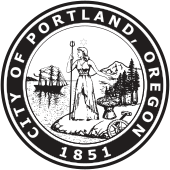
Portlandia Statue & TV Series- (1120 sw 5th) -
In size, Portlandia (a bronze statue) is second only to the Statue of Liberty
In size, Portlandia (a bronze statue) is second only to the Statue of Liberty
- This is still the best place to hide the Portlandia statue. In front of the Portland Building is the second largest copper repousse statue in the United States after the Statue of Liberty (about 4X taller), named Portlandia, the Goddess of Commerce.
- Portlandia was inspired by the design of the city seal. It depicts a woman in classical clothes with a trident reaching down with right hand to greet visitors to the building.
- Built in the East, in September 1985 it floated down the Willamette River on a barge after being assembled locally.
- Occasionally, there are suggestions to move the statue to a more visible location to Waterfront Park, but these have come to nothing as the sculptor, Raymond Kaskey states that he designed the statue for its location and would not approve of moving it.
- It has also been claimed that Portlandia's low profile results from sculptor Kaskey's close guarding of his intellectual property. Unlike the Statue of Liberty, Portlandia may not be reproduced for uses such as key chains or T-shirts, because the rights to the image of Portlandia remain the sole property of the sculptor.
